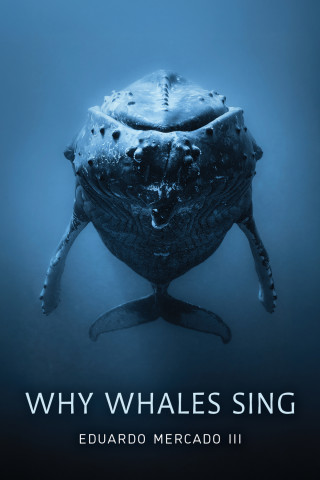
Reviews
Those of us who throw a line overboard or off a dock and quiver as some invisible creature teases our bait but curse the water’s opaqueness will revel in this highly scientific textbook that penetrates the murky secrets of the sea.
Secor's research brings together the history of ideas on fish migration, as well as an analysis of the new technologies that have provided remarkable observations on movements of fish in the global oceans to address why fish go where they do, and why an understanding is critical to the management of ocean uses.
An up-to-date synthesis of current knowledge of marine fish migrations... Appropriate for advanced undergraduate students, graduate students, fisheries professionals, and marine ecologists.
... Many students of ecology and a wide range of professionals will benefit from the synthesis of ideas and large collection of relevant citations provided in this book.
David Secor’s book on the migration ecology of marine fishes represents a comprehensive synthesis of the state of the science in this field... Secor reveals the complexities of marine fish migration and provides the reader with an unprecedented window into movement dynamics under the sea.
[Migration Ecology of Marine Fishes] provided the most comprehensive, creative, current, and ambitious overview of migration literature to date. Secor especially succeeded in finding ways to discuss the mechanisms and ecological consequences of migration in almost every aspect of a fish’s life...
... an insightful and comprehensive account... Migration Ecology of Marine Fishes will make a very useful contribution by providing a framework for the broader interpretation of fish migration. This same framework has important implications for the understanding and management of fish population/species productivity, stability and resilience in the face of fishing pressure and environmental change.
...undoubtedly an outstanding book and I strongly recommend it to all scientists, researchers, and students who are interested in migration and fisheries ecology. I cannot praise it highly enough.
It deserves to be read by everyone with an interest the ecology of fishes, as well as those studying migratory behaviors in other groups. One comes away from the book with the clear impression that studies focusing on single aspects of fish movements are missing much of the story.
Those taking the time to read this book slowly and repeatedly will continuously find new insights and be rewarded for their effort.
The value of Migration Ecology of Marine Fishes is that it provides accessible avenues for researchers that do study fish movement at the individual-level (or from behavioral and physiological perspectives) to consider the emergent properties that arise at the population level... Secor accomplishes what he set out to do, adding several useful new dimensions to the treatise by Harden-Jones.
This book encapsulates the major advancements of the field, incorporating old and new concepts of migration to the latest technology in studying fish movement... Overall, Migration Ecology of Marine Fishes is an exceptional read for a graduate student or fisheries ecologist. It provides a current review of migration theory—a synthesis that has been long overdue in the marine ecology literature.
Secor, in this tour de force synthesis on marine fish migrations, brings together the literature on the history of ideas across a broad disciplinary suite, as well as on the new technologies that have provided remarkable observations on movements of fish in the global oceans. The breadth of coverage enables a nuanced and complex causal framework; which addresses why fish go where they do, and why an understanding of the mechanisms is critical to the management of ocean uses. Migration Ecology of Marine Fishes is an essential read for ecologists of all specialties. It will sit comfortably beside Harden Jones' Fish Migration.
This book is far more than a review of fish migration. Secor contemplates 'migration' as a complex system of adaptation, woven from the warp of recent theories, models, and hypotheses in various disciplines of ecology, behavior, ichthyology, oceanography, and fisheries science.
This perceptive book updates and enhances Harden Jones' pioneering concepts on fish migration.
Book Details
Acknowledgments
1. Introduction
Classifying Migration
Book Organization
2. Bird and Fish Migration
Movement in Fluids
Analysis of Movements and Migration
Rules of Aggregation
Schooling and Flocking
Navigation
Acknowledgments
1. Introduction
Classifying Migration
Book Organization
2. Bird and Fish Migration
Movement in Fluids
Analysis of Movements and Migration
Rules of Aggregation
Schooling and Flocking
Navigation Capacities
Summary
Segue
3. Mating Systems and Larval Dispersal
Mating Systems
Embryo and Larval Dispersal
Alignment of Larval Dispersal with Mating Systems
Selective Harvest during Spawning Migrations
Summary
Segue
4. Complex Life Cycles and Marine Food Webs
Marine Food Webs
Migrating among Size Spectra
Marine Ecosystem Patchiness, Transience, and Periodicity
Life Cycle Schedules
Schooling through Food Webs
The Storage Effect
Summary
Segue
5. Population Structure
Finding Their Way back Home
Life Cycle Closure
Open Life Cycles
Metapopulation Theory
Taking Stock of Population Thinking
Summary
Segue
6. Propagating Propensities
Conditional Migrations
Partial Migration Writ Narrow
Evolution of Partial Migration and Ecological Speciation
Partial Migration Writ Large
Summary
Segue
Recapitulation
7. Resilience
Resilience Theory
Resilience to Fishing and Climate Change
Collective Agencies and Biodiversity
Building Resilience into Populations
Summary
Bibliography
Index





